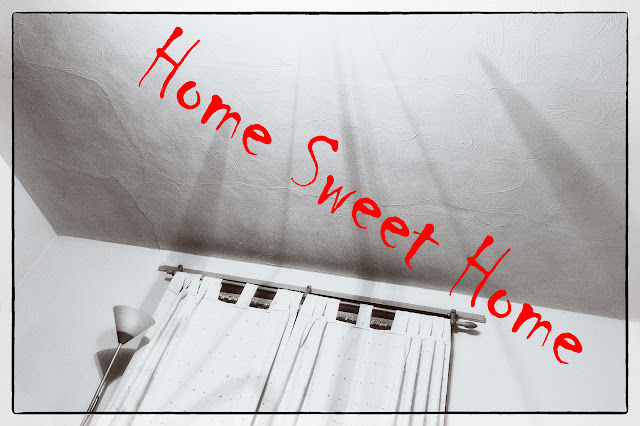Ansel Adams dedicated a lot of space in his published works to the concern of 'Image Management' - ensuring the 3-dimensional world was appropriately projected onto his 2-dimensional film plates. Of course he was working with field cameras that have an amazing range of adjustments available. 35mm film cameras (and their modern digital counterparts) are highly restricted in these terms and so we have become accustomed to, even accepting of, converging verticals as we try to fit tall buildings into the frame. In fact this limited ability to control perspective has become a virtue signalling immediacy that we read as 'truthfulness'; after all, a wonky "grab" shot could hardly have been posed, could it?
'Wonky' shots are quite popular, especially after decades of being exhorted to "keep the horizon level". From the 1920's cinematographers adopted the Dutch (or Deutsch) Angle technique, deliberately not keeping the horizon level to portray unease, tension or madness. This is a very restricted application and as such can quickly become tired.
So when shooting stills 'on the wonk' there are two dangers
- The image may just look messy, with the composition refusing to cohere
- The effect may look tired out of overuse
Both of these concerns can be avoided by understanding that shooting 'on the wonk' isn't an 'anything goes' technique; by considering the nature of the composition we can understand when, and why, the technique works.
When shooting on the wonk we are deliberately departing from the maxim "keep the horizon level"; we can approach this in one of six ways:
- Proxy Horizon: Some strong element other than the horizon is placed on the level
- Strong Vertical: Some strong element is arranged parallel to the vertical frame edges
- Strong Diagonal: Some strong element is arranged parallel to one of the strong diagonals of the frame
- Strong Free Form: Nothing is arranged exactly level or vertical, but there are elements strong enough to lead the eye
- Acute Free Form: Somethings are arranged nearly level or vertical or almost follow a strong diagonal
- Obtuse Free Form: Nothing is arranged exactly level or vertical, and there are no elements that strongly lead the image, but it somehow works all the same
 |
| Here the left-hand side of the building is a Strong Vertical |
 |
| Here I've added a red guideline to show the Strong Diagonal that one of the main lines in the image follows |
 |
| Nothing here exactly aligns vertically or horizontal but the Shard itself is a Strong Free Form element that gives the composition direction. |



